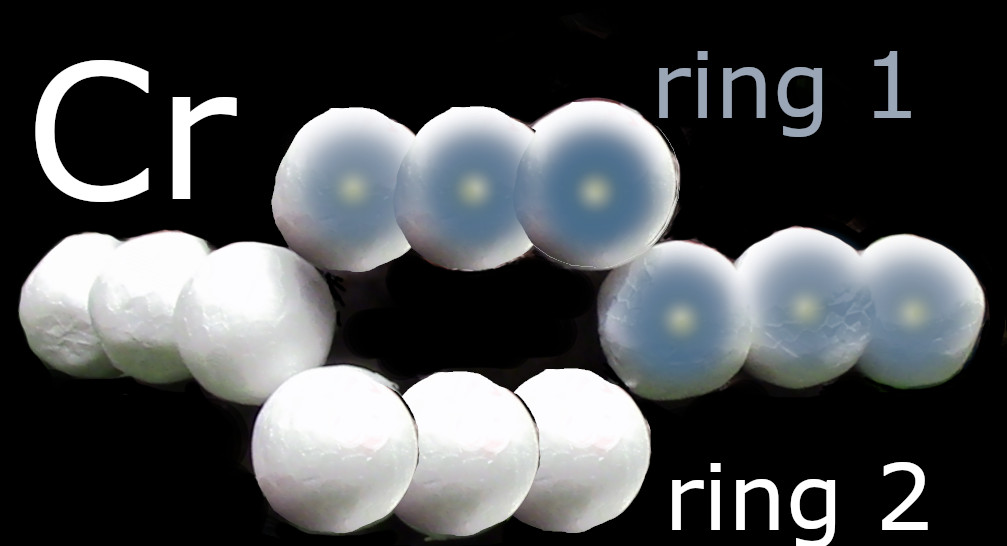The shape of the atomic nucleus of chromium
The element Cr is the only element that is antiferromagnetic.
Cr is the hardest metal using the Mohs hardness.
Chrome is shiny because of self-passivation. Cr does not
need an oxide to make the surface become unreactive.
The nuclear structure of Cr is described in this page and its link to
a .pdf file.
Link to chromium paper.
Cr is the hardest metal using the Mohs hardness.
Chrome is shiny because of self-passivation. Cr does not
need an oxide to make the surface become unreactive.
The nuclear structure of Cr is described in this page and its link to
a .pdf file.
Link to chromium paper.
The Journal of Nuclear Physics published the paper in July, 2021.
Figure 1: white protons, brown neutrons for sculpture of the chromium nucleus
Two proton rings. Each ring has 10 protons in chromium.
Iron has 12 protons in each ring.
Gadolinium has 18 in each ring.
Figure 1: white protons, brown neutrons for sculpture of the chromium nucleus
Two proton rings. Each ring has 10 protons in chromium.
Iron has 12 protons in each ring.
Gadolinium has 18 in each ring.
Cr has non-coaxial rings. A mutual flux can only join a fraction of each ring. The other areas of the rings that do not overlap can be driven by flux of adjacent atoms, independently. So, Cr can be demagnetized easily.
Demagnetizing Fe is more difficult. A north pole and south pole get driven and then the polarity is reversed. Repeat 500 cycles of those pole reversals, and then withdraw the external field slowly. That procedure is needed because Fe can only have one ring facing a source of flux from an adjacent atom. Cr can have two rings facing an adjacent atomic magnet.
If one simply forces an iron magnet a single event of driving the north pole with a north pole, the Fe will not get demagnetized. The north pole will be magnetized to be a south pole.
Cr is different. A single event can drive flux to Cr into one side of the atom. That event can apply a north pole in one ring and a south pole to the other ring simultaneously from one side. Those properties of antiferromagnetism were not known before this theory.
4/13/2022 Harford
Alan Folmsbee
Contact me for giving a lecture or seminar using omnilobe@gmail.com
4/13/2022 Harford
Alan Folmsbee
Contact me for giving a lecture or seminar using omnilobe@gmail.com




Comments
Post a Comment